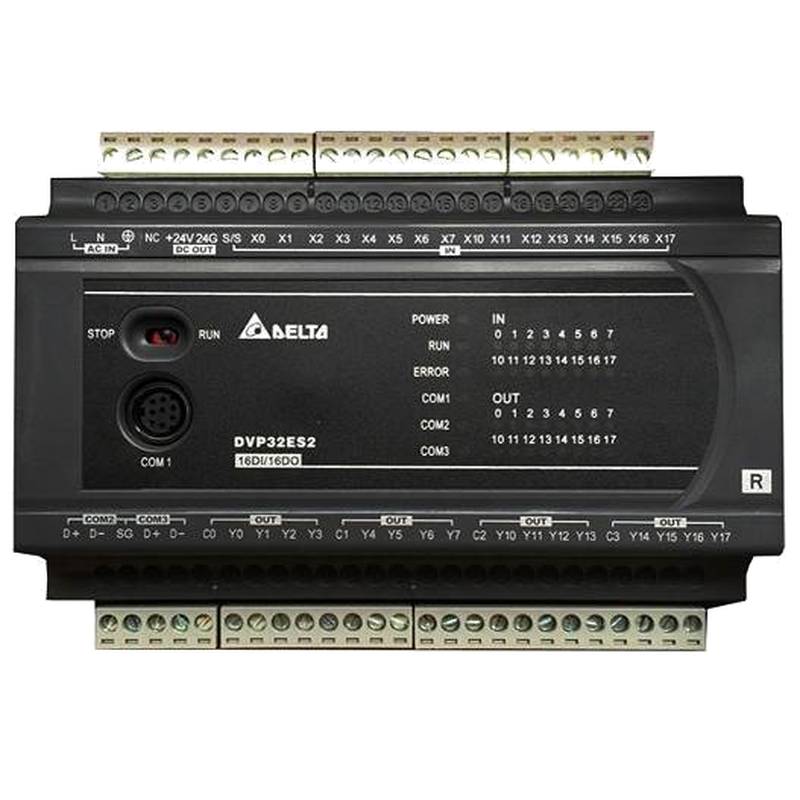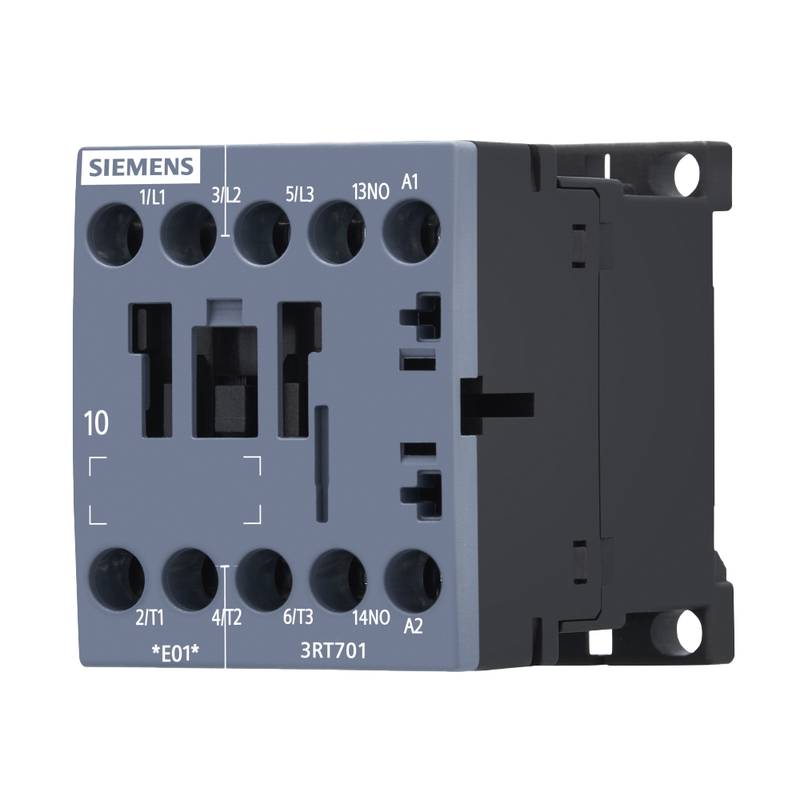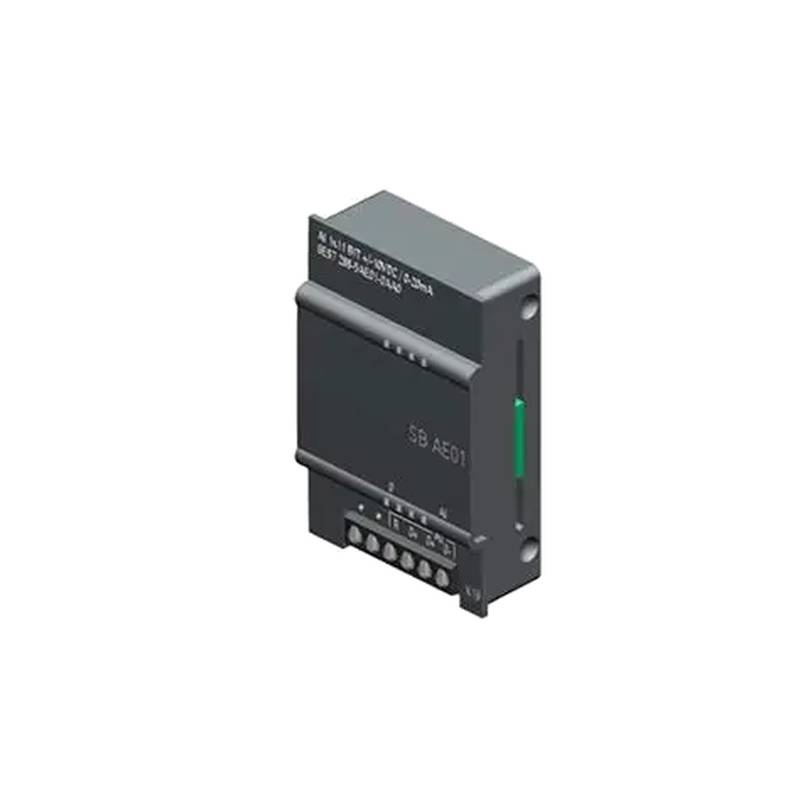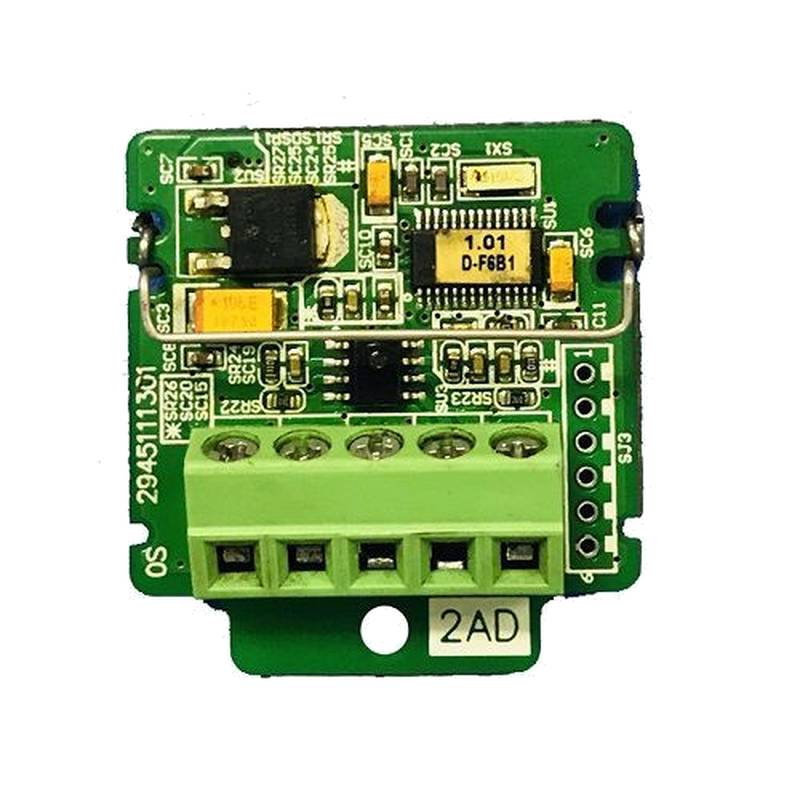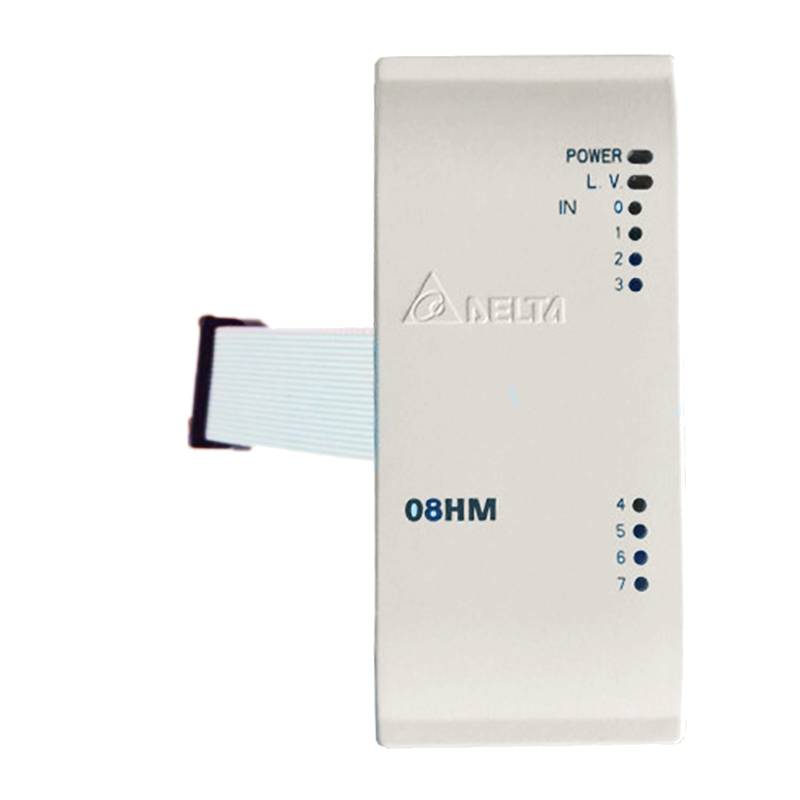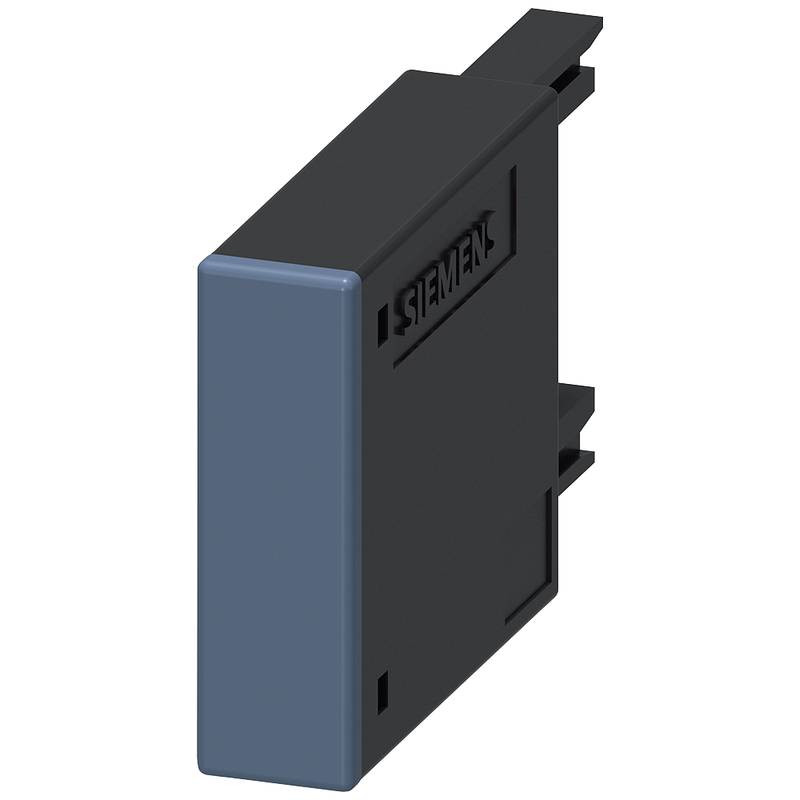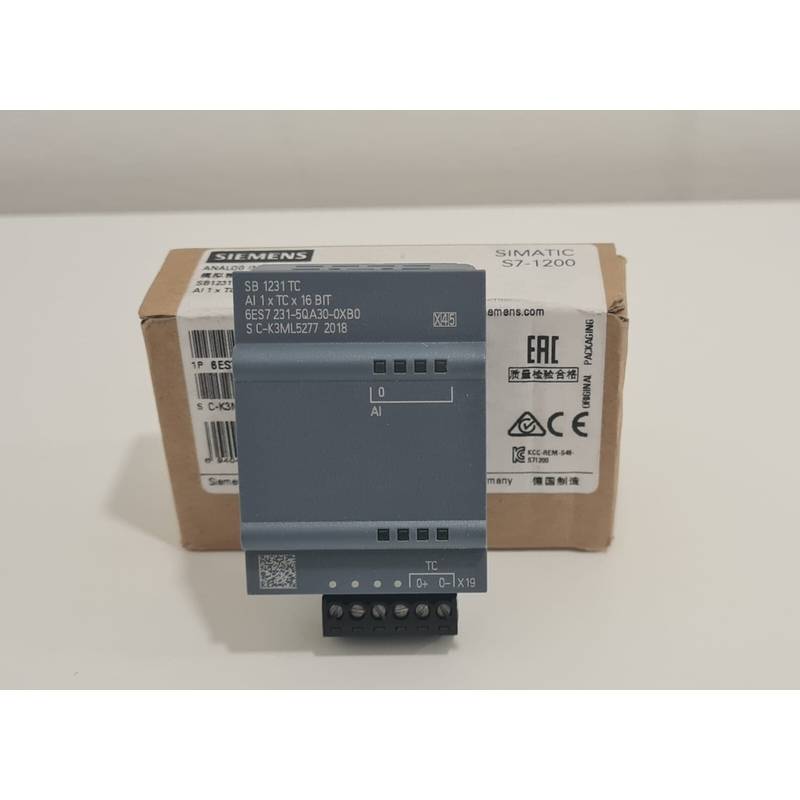
The Delta DVP80ES200R is a robust, large-scale relay output PLC designed for demanding industrial automation projects. This powerhouse offers significant I/O density, reliable performance, and flexible expansion capabilities, making it a prime choice for complex machine control and process automation. Its extensive relay output points provide direct control over a wide range of industrial equipment, simplifying wiring and reducing the need for external relays in many applications. Key advantages include its high processing speed, extensive memory for intricate logic, and broad compatibility with various communication protocols, ensuring seamless integration into diverse industrial environments. The DVP-ES2 series, to which this model belongs, is recognized for its cost-effectiveness and dependable operation in challenging conditions.
Product Specifications
| Feature | Specification |
| :--------------------- | :------------------------------------------------ |
| Model | DVP80ES200R |
| Input Points | 48 |
| Output Points | 32 Relay Outputs |
| Power Supply | 100-240VAC |
| Max. Program Steps | 16K Steps |
| Communication Ports | RS-232, RS-485 |
| High-Speed Counts | 4-ch 200kHz (or 4-ch 100kHz + 2-ch 10kHz) |
| Pulse Output | 2-ch 100kHz (or 2-ch 10kHz) |
| Dimensions (W x H x D) | 230 x 90 x 75 mm |
| Mounting | DIN Rail |
Core Features & Market Positioning
The Delta DVP80ES200R distinguishes itself in the industrial automation market through its high density of relay outputs, a critical factor for controlling numerous actuators, contactors, and indicators in large-scale machinery. This eliminates the need for extensive external relay panels, saving cabinet space, wiring time, and reducing potential points of failure. Its robust processing capabilities, supported by 16K program steps, allow for sophisticated logic and complex sequence control, positioning it as a superior choice over smaller PLCs for demanding applications. The inclusion of built-in RS-232 and RS-485 ports facilitates straightforward integration with SCADA systems, HMIs, and other intelligent devices, enhancing its value proposition in modern industrial networks. Delta's reputation for producing reliable and cost-effective automation solutions further solidifies the DVP80ES200R's competitive edge.
Key Application Scenarios
This versatile PLC is ideally suited for a wide array of industrial automation tasks. Its 80-point configuration and substantial relay output capacity make it an excellent fit for controlling complex conveyor systems in manufacturing and logistics, managing large HVAC systems in building automation, and orchestrating multi-zone process control in chemical plants or food processing facilities. Packaging machinery, printing presses, and textile manufacturing equipment often benefit from the DVP80ES200R's ability to handle numerous discrete outputs and inputs for precise operational sequencing. Furthermore, it serves as a capable controller for large injection molding machines and plastic processing equipment, where the reliable switching of high-current loads via its relay outputs is paramount.
Practical System Integration Guidance
Integrating the Delta DVP80ES200R into an industrial system begins with careful consideration of its power requirements; the 100-240VAC input ensures flexibility in global installations. Wiring of the 48 digital inputs and 32 relay outputs requires adherence to electrical safety standards, with clear labeling for each point to prevent errors. For digital inputs, a common configuration involves connecting sensors such as proximity switches, limit switches, and push buttons, ensuring appropriate voltage levels (e.g., 24VDC) are supplied and common grounds are established. The relay outputs are rated for specific AC/DC voltage and current, and it's crucial to ensure these ratings are not exceeded by the connected loads, typically contactors for motors or solenoid valves. Program development is typically done using Delta's ISPSoft software, which supports ladder logic, function block, and structured text programming. Establishing communication via RS-232 or RS-485 requires selecting the correct protocol (e.g., Modbus RTU) and configuring the communication parameters (baud rate, parity, stop bits) in both the PLC and the connected master device.
Operation and Risk Mitigation
Operating the Delta DVP80ES200R involves ensuring it is installed in an environment that meets its operational temperature and humidity specifications to prevent premature failure. Proper grounding of the PLC chassis and all connected equipment is essential to mitigate electrical noise and protect against transient voltage surges, which are common in industrial settings. During maintenance or programming, always follow lockout/tagout procedures before interacting with the physical wiring or components connected to the PLC's outputs to prevent unexpected equipment startup. Common troubleshooting for this PLC often involves checking input status lights to verify sensor readings, monitoring output status lights to confirm the PLC is attempting to energize loads, and reviewing the PLC's internal status registers for error codes via the programming software. Faults related to output overcurrent can often be addressed by verifying the connected load's power consumption against the relay's rating or by adding appropriately sized external overload protection.
Scalability & Long-Term Value
The Delta DVP80ES200R offers significant scalability, allowing for expansion of its I/O capabilities through Delta's proprietary communication modules. This means that as an automation project grows or requires additional inputs or outputs, the existing PLC can often be retained by adding specific expansion cards, thereby protecting the initial investment in programming and hardware. Its compatibility with various industrial communication protocols, such as Modbus TCP/IP when using appropriate communication modules, ensures it can be integrated into modern IIoT platforms and Industry 4.0 initiatives. This allows for remote monitoring, data acquisition, and predictive maintenance capabilities, extending the long-term value of the automation system. The DVP-ES2 series is known for its longevity and consistent performance, making it a reliable backbone for systems expected to operate for many years.
Frequently Asked Questions
What is the maximum number of expansion modules that can be connected to the Delta DVP80ES200R?
The Delta DVP80ES200R can typically support a certain number of expansion modules, usually specified by Delta's documentation. These modules can expand the PLC's digital and analog input/output capabilities significantly. Adding modules allows users to tailor the PLC's I/O count precisely to project requirements without replacing the base unit.
The specific limit often depends on the type of expansion modules used and the PLC's internal processing capacity. Referencing the official Delta DVP-ES2 series user manual is crucial for exact specifications. This ensures compatibility and avoids overloading the PLC's communication bus.
Expansion allows for future-proofing automation systems, accommodating new machinery or process changes over time. This modular approach provides a cost-effective upgrade path compared to migrating to an entirely new PLC system.
How do I perform a factory reset on the Delta DVP80ES200R PLC?
A factory reset typically involves a specific procedure outlined in the PLC's manual. It often requires special jumper settings or a sequence of button presses while powering up the unit. Such resets revert all user programs and settings to their default states.
It is critical to back up the existing program before attempting a factory reset. This procedure should only be performed if other troubleshooting methods have failed, as it erases all custom configurations and operational logic. The PLC will need to be reprogrammed from scratch after a reset.
Performing a factory reset can resolve persistent software glitches or corrupted program data that are hindering normal operation. Ensure you have the correct firmware version and programming software ready to re-commission the PLC.
What communication protocols does the Delta DVP80ES200R support out of the box?
The Delta DVP80ES200R PLC comes equipped with built-in RS-232 and RS-485 communication ports. These ports primarily support serial communication protocols. Modbus RTU is a widely used protocol that can be implemented over these serial interfaces.
These standard serial ports allow the PLC to communicate with human-machine interfaces (HMIs), variable frequency drives (VFDs), and other industrial devices. It also enables communication with supervisory control and data acquisition (SCADA) systems for monitoring and control. Configuration of these protocols is done via the programming software.
For more advanced communication, such as Ethernet/IP or Modbus TCP/IP, optional communication modules would be required. These add-on modules significantly enhance the PLC's connectivity options for integration into modern industrial networks.














